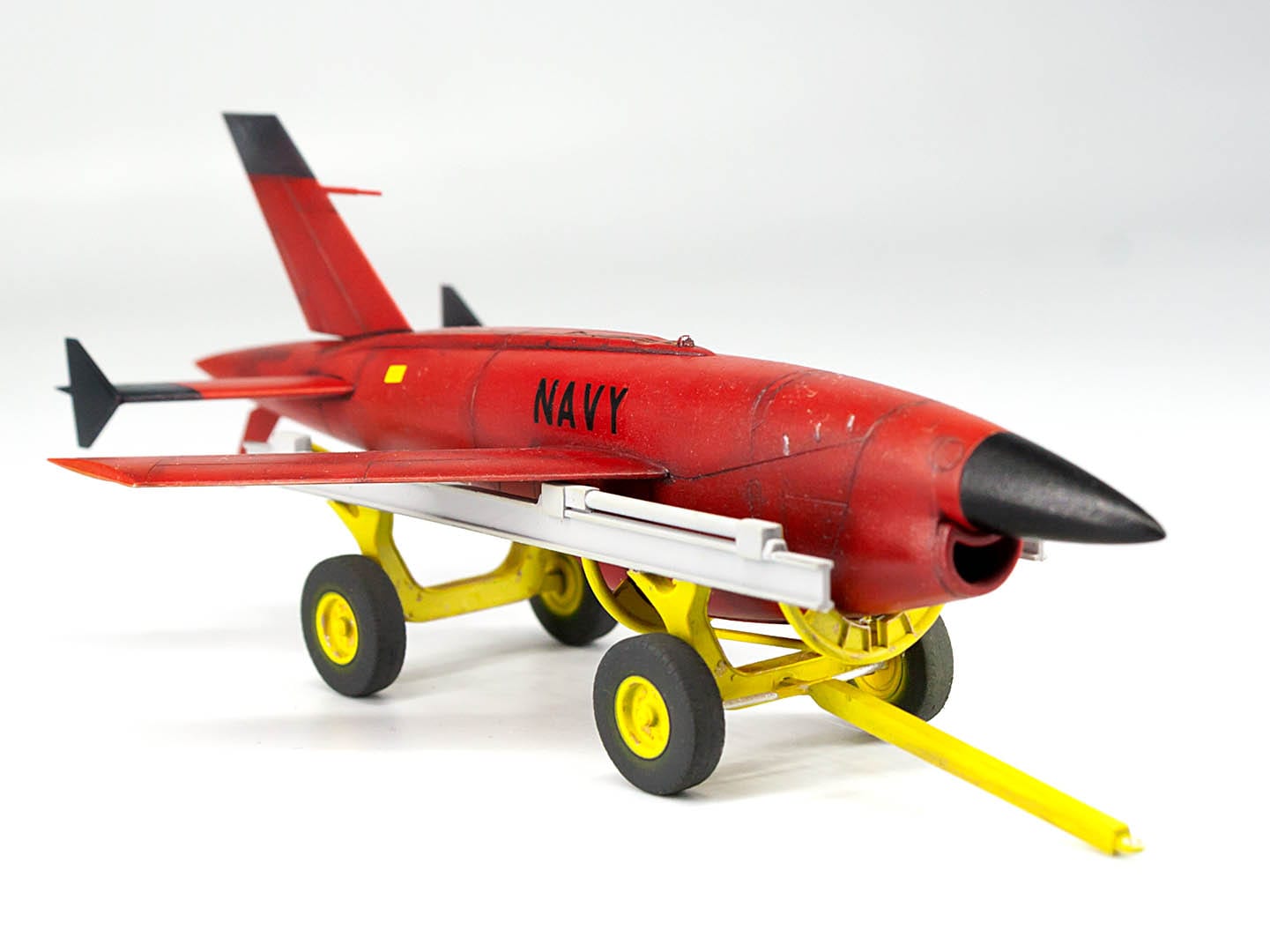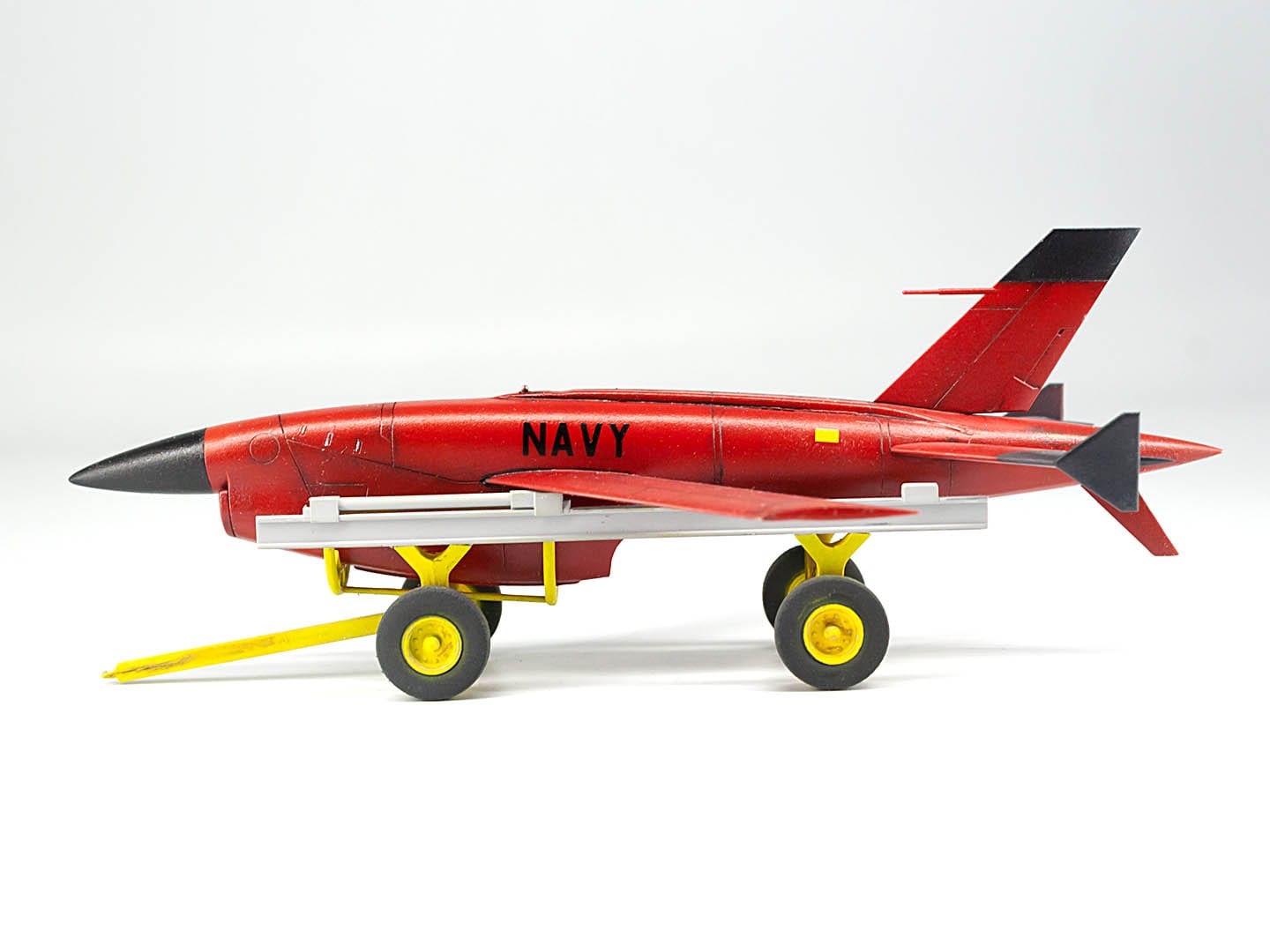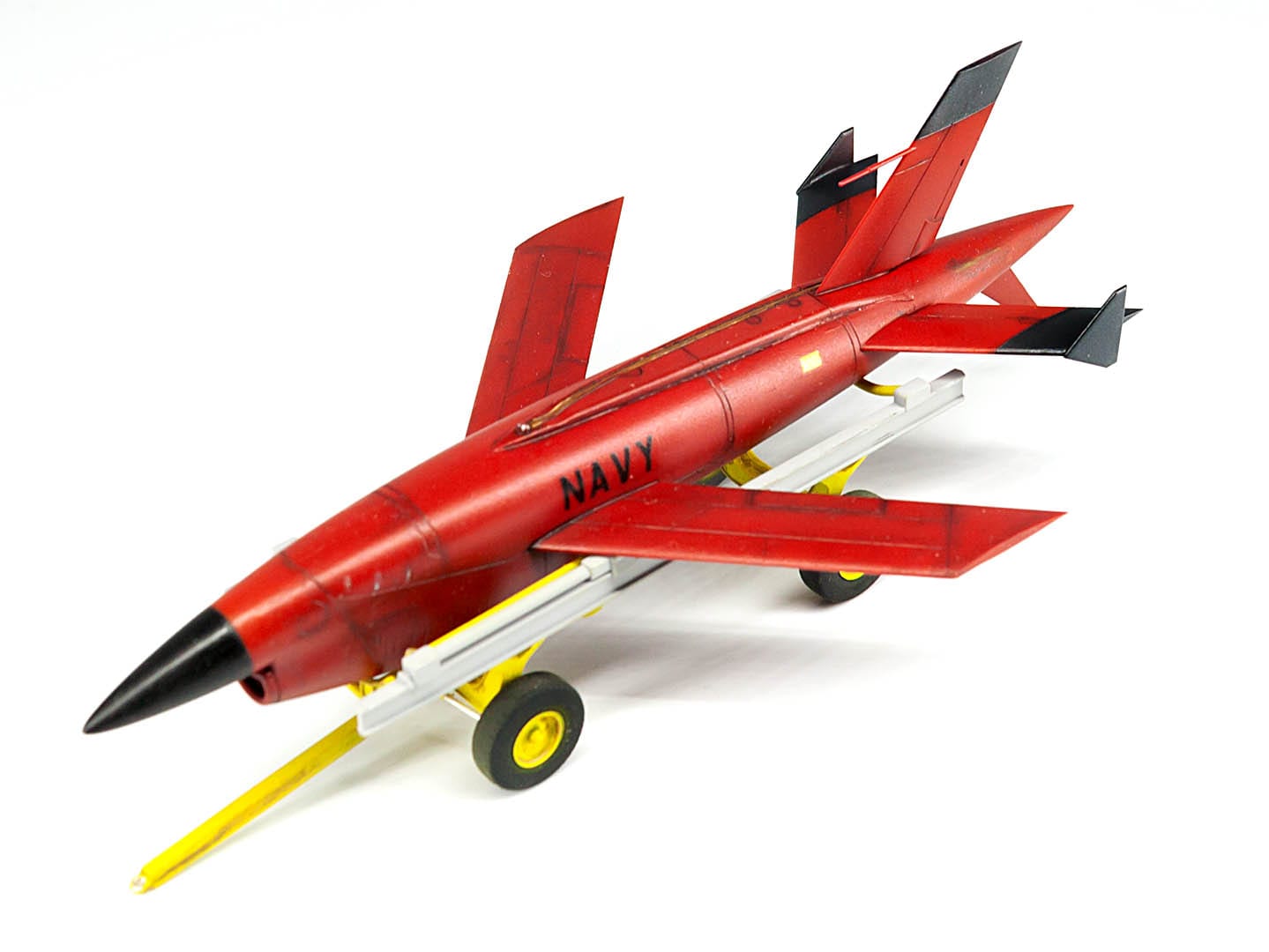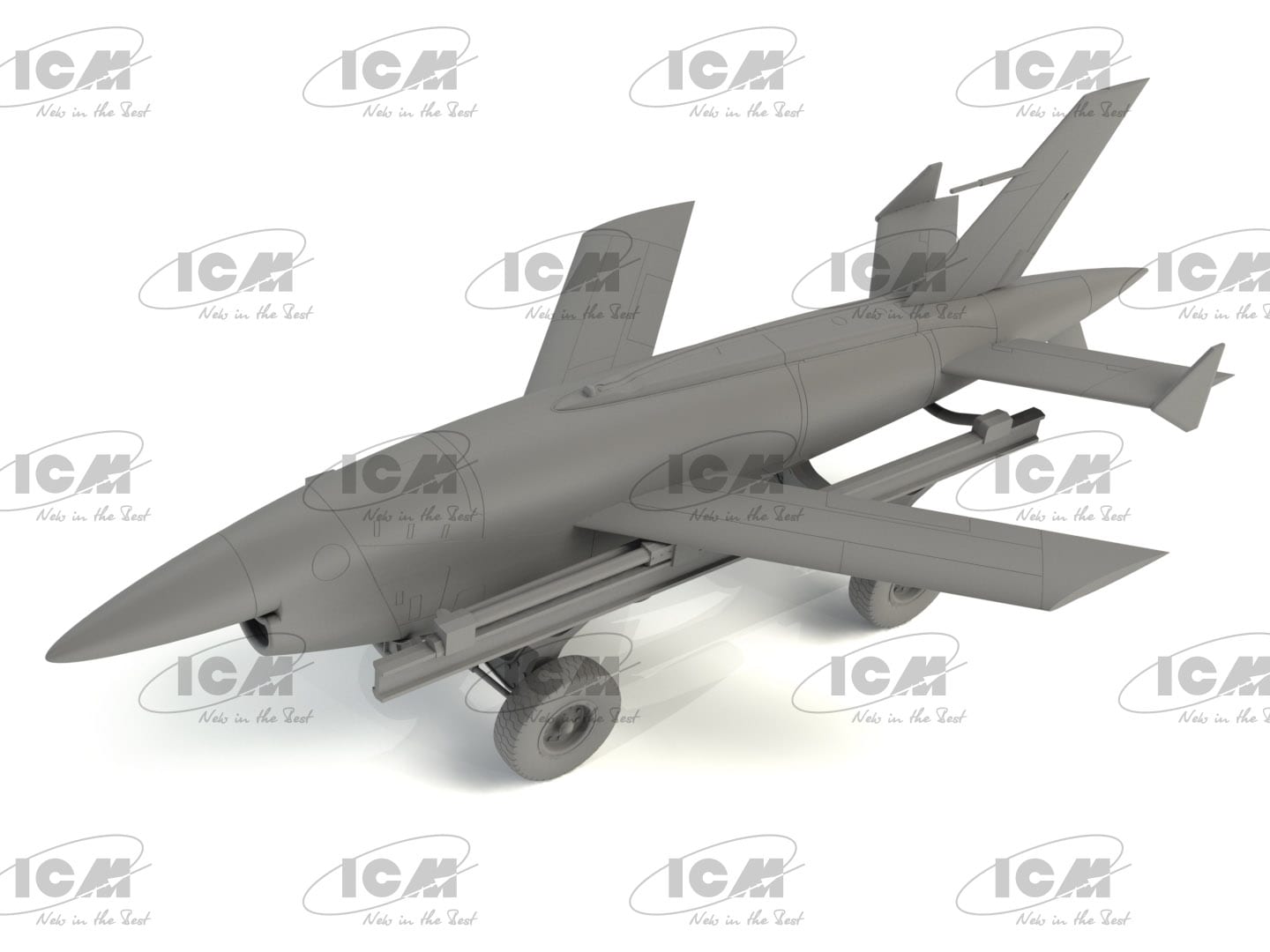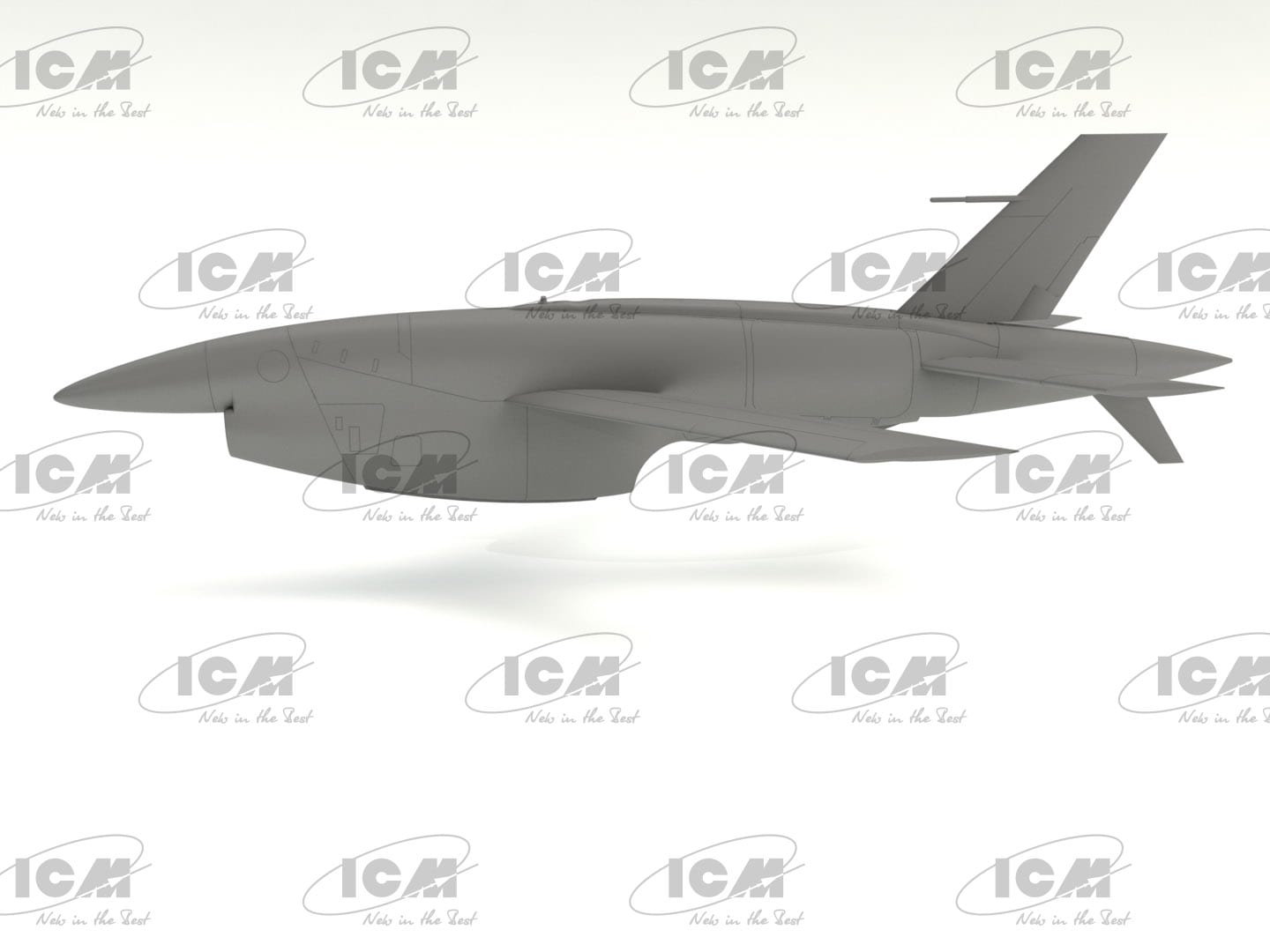ВQM-34А (Q-2С) Firebee with trailer (1 airplane and trailer) 1/48
16,95€
In stock

*Please check our Privacy Policies to see how to we use your personal data.
*Por favor revisa nuestra Política de Privacidad para ver como tratamos tus datos personales
In the late 1950s, the USAF awarded Ryan a contract for a substantially improved “second generation” Firebee, the Model 124, originally with the designation Q-2C. The initial prototype performed its first flight in late 1958 and went into production in 1960. In 1963, it was redesignated the BQM-34A. The old first-generation KDA-1 and KDA-4 targets then still flying with the Navy were (somewhat confusingly) given the respective redesignations AQM-34B and AQM-34C.
The BQM-34A emerged as the Firebee as it is recognized today, with a bigger airframe, longer wings, and a particular “chin”-type inlet under a pointed nose (in contrast to the circular intake of the first-generation Firebees). It was powered by a Continental J69-T-29A turbojet, a copy of the improved Turbomeca Gourdon derivative of the Marbore, with 1,700 lbf (7.6 kN) thrust. The U.S. Navy also adopted the BQM-34A, while the Army obtained a ground-launched version designated MQM-34D with longer wings and a heavier JATO booster.
A feature of the second-generation Firebee is that some photographs show it to with triangular endplates on the tailplane, while others show no endplates but feature a ventral fin under the tail, and still others have neither endplates nor ventral fin. Since most modern hotographs of Firebees show the ventral fin, this may have been due to production changes or later refits (reference sources are unclear on this).
In 1960 the first stealth technology development program was initiated by USAF, by reducing the radar cross-section of a Q-2C drone. This was achieved through specially designed screens over the air intake, radiation-absorbent material on the fuselage and a specialradar-absorbing paint.
A finales de la década de 1950, la USAF le otorgó a Ryan un contrato para un Firebee de “segunda generación” sustancialmente mejorado, el Modelo 124, originalmente con la designación Q-2C. El prototipo inicial realizó su primer vuelo a finales de 1958 y entró en producción en 1960. En 1963, fue redesignado como BQM-34A. Los antiguos objetivos KDA-1 y KDA-4 de primera generación que entonces todavía volaban con la Armada recibieron (algo confuso) las respectivas redesignaciones AQM-34B y AQM-34C.
El BQM-34A surgió como el Firebee como se lo reconoce hoy, con una estructura de avión más grande, alas más largas y una entrada de tipo “mentón” particular bajo una nariz puntiaguda (en contraste con la entrada circular de los Firebees de primera generación). Estaba propulsado por un turborreactor Continental J69-T-29A, una copia del derivado Turbomeca Gourdon mejorado del Marbore, con 1.700 lbf (7,6 kN) de empuje. La Marina de los EE. UU. También adoptó el BQM-34A, mientras que el Ejército obtuvo una versión lanzada desde tierra designada MQM-34D con alas más largas y un refuerzo JATO más pesado.
Una característica del Firebee de segunda generación es que algunas fotografías lo muestran con placas terminales triangulares en el plano de la cola, mientras que otras no muestran placas terminales pero tienen una aleta ventral debajo de la cola, y otras no tienen placas terminales ni aleta ventral. Dado que la mayoría de las fotografías modernas de Firebees muestran la aleta ventral, esto puede deberse a cambios de producción o reajustes posteriores (las fuentes de referencia no están claras al respecto).
En 1960, la USAF inició el primer programa de desarrollo de tecnología furtiva, al reducir la sección transversal del radar de un avión no tripulado Q-2C. Esto se logró mediante pantallas especialmente diseñadas sobre la entrada de aire, material absorbente de radiación en el fuselaje y una pintura especial absorbente de radar.
ESCALA
1:48
PERIODO DE TIEMPO
Después de 1950
MARCAS
Dron objetivo BQM-34 Firebee de la Marina de los EE. UU. Base naval del condado de Ventura.
US Navy BQM-34 completó 36 misiones exitosas
US Air Force BQM-34 Firebee Target Drone, Wallace Air Station
Dron objetivo BQM-34 Firebee de la Marina de los EE. UU., Década de 2000
TAMAÑO DEL MODELO (LARGO X ANCHO)
146 x 81 mm
TAMAÑO DE CAJA
247 x 183 x 33 mm
NÚMERO DE DETALLES
36



